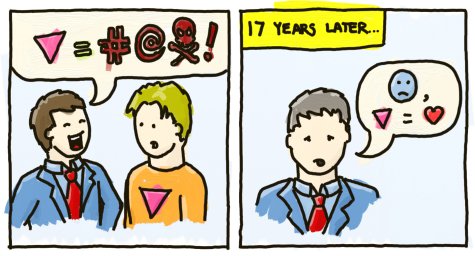
Sometimes I can talk all day about how to improve communication and
people never get it. In the spirit of fun, here are some handy tongue-in-cheek
tips for people who strive to be bad communicators, to stay unclear, and to
keep creating quagmires and confusion in their lives.
Use these six little secrets to keep your life in chaos. Use them in business
and at home to keep things in turmoil. These are also handy ways to ensure a
high employee turnover.
Raise your voiceIf you really don’t want to get your point across, just begin shouting or scolding.
Either response prevents any further intelligent discourse. This rule is
particularly important when a language barrier prevents someone from
understanding you. When someone doesn’t understand your language, just
talk louder. Loud communicates the same message to people all around the
world. Loud is disrespectful. Loud characterizes someone you don’t want to
do business with.
Leave out detailsDetails let the other person know exactly what you want or need. Leave the
message fuzzy if you want to continue having bad communication. Details
take time. You can shave valuable minutes off the average communication by
leaving out the details. After all, it only takes a few hours to clean up most
messes created by such an omission.
Don’t check to see if you were understoodThis rule is very important for would-be bad communicators. If you spend
time checking to see whether you were understood, all the other efforts you
make to be a bad communicator can be thrown out the window. Don’t give
the other person a chance to say, “I didn’t understand xyz.” Otherwise, you’ll
have to clarify. If you want to be unclear, do your deed and skedaddle before
anybody can ask any questions.
Walk away and talk at the same timeToss your request, instruction, or demand flippantly over your shoulder as
you are walking away from the person to whom you are speaking. Preferably,
avoid looking at the other person during conversation. This technique denies
virtually any possibility of being understood. And you haven’t wasted those
precious seconds required to face the person you are talking to and make eye
contact.
Assume that everyone understands youIf you are a bad communicator, you already know about the dangers of assuming
information, but we thought we would remind you anyway about the most
popular tool of the unclarity trade. Just send an old-fashion telegram when a
detailed letter is needed.
Don’t permit any objections or questionsHeck, don’t permit any response. The other person may be taking up your
time to understand the niggling information. Toss out whatever you have to
say and cut off the discussion. Anything further would just help clarify what
you are saying.








 Human beings receive most nonverbal cues from the face. Because people primarily look at each other’s faces during communication, humans have evolved to understand facial cues the best. Professional card players rely so heavily on controlling their facial expressions that the term poker face is used to describe the ability to hide feelings behind a mask of non-expression. Interestingly, photographic studies show that even the most practiced card sharks can’t prevent the pupils of their eyes from expanding when they open a really good hand.
Human beings receive most nonverbal cues from the face. Because people primarily look at each other’s faces during communication, humans have evolved to understand facial cues the best. Professional card players rely so heavily on controlling their facial expressions that the term poker face is used to describe the ability to hide feelings behind a mask of non-expression. Interestingly, photographic studies show that even the most practiced card sharks can’t prevent the pupils of their eyes from expanding when they open a really good hand.





 Unlike simple yes-or-no questions, open-ended questions invite the respondent to talk — and enable you to get much more information. These are the types of questions to use when you want to find out a person’s opinion or gather some facts during the course of a negotiation. The more you get the other person to talk, the more information you learn. Yes-or-no questions limit choices and force a decision. These types of questions are called closed questions.
Unlike simple yes-or-no questions, open-ended questions invite the respondent to talk — and enable you to get much more information. These are the types of questions to use when you want to find out a person’s opinion or gather some facts during the course of a negotiation. The more you get the other person to talk, the more information you learn. Yes-or-no questions limit choices and force a decision. These types of questions are called closed questions.











 Asking questions is so important. I won’t detract by trying to abbreviate the subject here. Just remember that asking the right questions at the right times, and listening to the answers, can move a negotiation forward in a way that nothing else can.
Asking questions is so important. I won’t detract by trying to abbreviate the subject here. Just remember that asking the right questions at the right times, and listening to the answers, can move a negotiation forward in a way that nothing else can.

 Everyone has a different way of pushing the pause button. Sometimes, how you push pause depends on the situation. Here are some of the more common pause buttons you can use:
Everyone has a different way of pushing the pause button. Sometimes, how you push pause depends on the situation. Here are some of the more common pause buttons you can use:

 Sometimes I can talk all day about how to improve communication and
Sometimes I can talk all day about how to improve communication and




